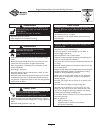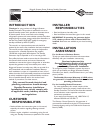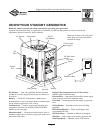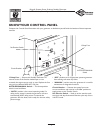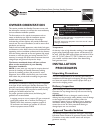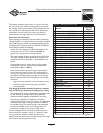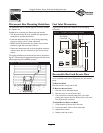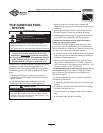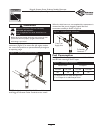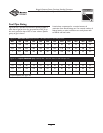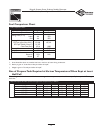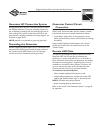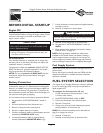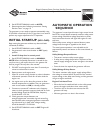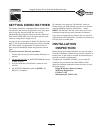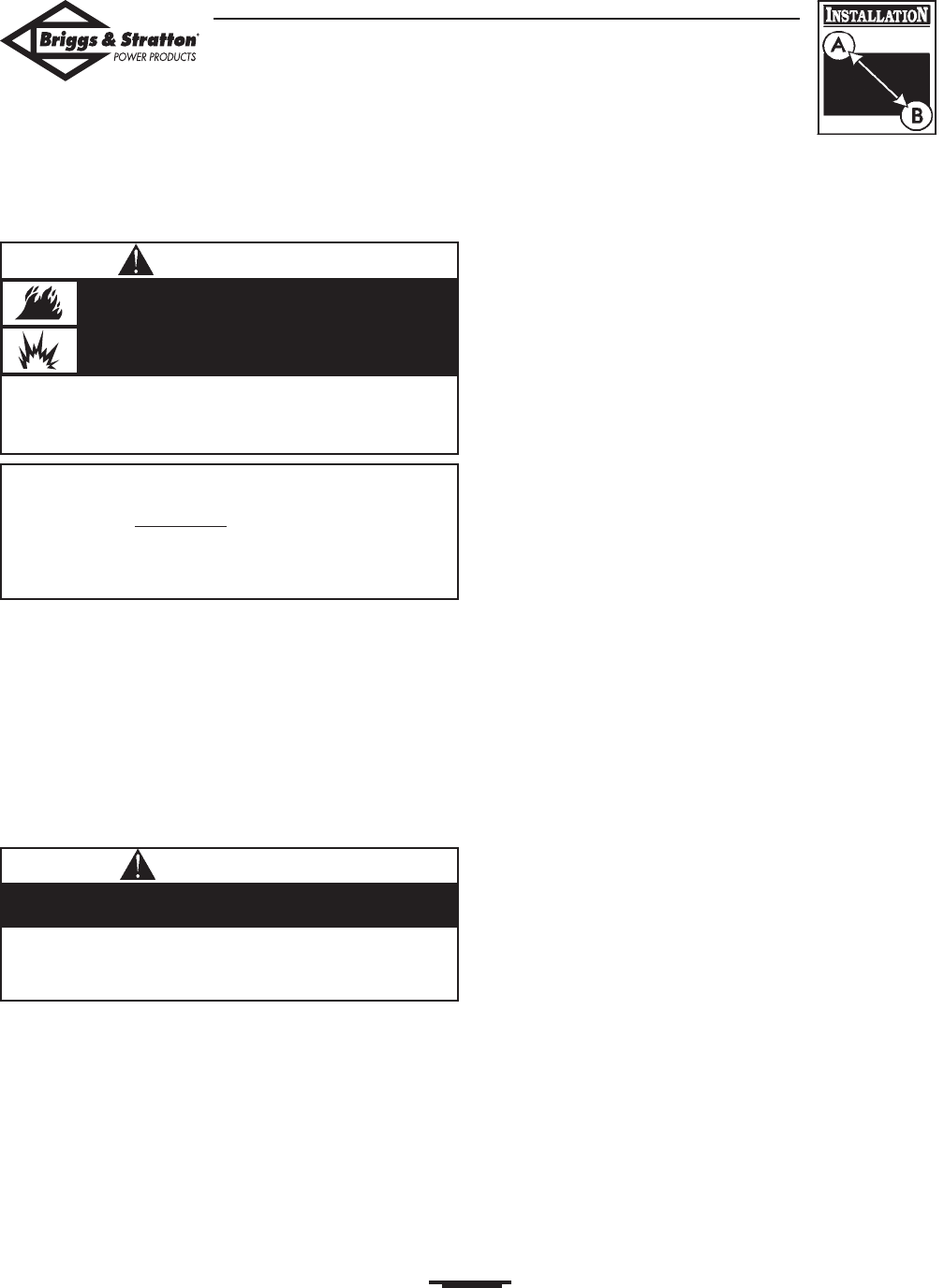
12
Briggs & Stratton Power Products Standby Generator
Installation, Start-Up and Owner’s Manual
THE GASEOUS FUEL
SYSTEM
Consult with the Standby Generator owner(s) and convey
any technical considerations that might affect their
installation plans before applying these general guidelines.
The following general rules apply to gaseous fuel system
piping:
• The piping should be of a material that conforms to
federal and local codes, rigidly mounted and protected
against vibration.
• Install flexible gaseous pipe (supplied) between the
standby generator fuel inlet port and rigid piping.
• Piping must be of the correct size to maintain the
required supply pressures and volume flow under varying
conditions.
• Use an approved pipe sealant or joint compound on all
threaded fittings to reduce the possibility of leakage.
• Installed piping must be properly purged and leak tested,
in accordance with applicable codes and standards.
Consider the following factors when planning to
install the fuel supply system:
The Standby Generator engine is fitted with a fuel mixer
system that meets the specifications of the California Air
Resources Board for “tamper-proof” dual fuel systems.The
unit will run on natural gas or liquefied propane.
• A minimum of one manual shutoff valve should be placed
in the fuel supply line and located outside the building to
facilitate servicing the generator.
• Natural gas fuel supply pressure at the generator's fuel
inlet port should be between 5 to 7 inches of water (in.
W.C.) at full load. LP fuel supply pressure should be 11 to
14 inches of water (in.W.C.) at full load.
The Standby Generator unit has been factory set to
run on natural gas. If you need to change from natural
gas to LP gas, the unit will need to be reconfigured, as
described on page 17.
It is recommended that the fuel connection incorporate
the following components:
• A manual fuel shut-off valve located in the interior of the
building.
• A manual fuel shut-off valve located outside the building,
just before the generator unit.
• The termination of hard piping should include a sediment
trap.
• A manometer port should be provided.
• The entire flexible gaseous pipe must be visible for periodic
inspection and must not be concealed within, contact,or run
through any wall, floor, or partition.
The supplied flexible gaseous pipe is not to be installed
underground or in contact with the ground.
CAUTION
The information provided below is to assist
gaseous fuel system technicians in planning
installations. In no way should this information
be interpreted to conflict with applicable fuel gas
codes. Consult with your local fuel supplier or
Fire Marshall if questions or problems arise.
• LP gas is heavier than air and will settle in low areas.
• Natural gas is lighter than air and will collect in high areas.
• The slightest spark can ignite these fuels and cause an explosion.
Propane and Natural Gas are extremely
flammable and explosive.
Fire or explosion can cause severe burns or
death.
WARNING



